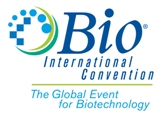Biovail Corp., Canada’s largest publicly traded drugmaker, announced that it has settled with the United States Department of Justice (DOJ) regarding criminal allegations related to activities surrounding the 2003 commercial launch of Cardizem LA. The DOJ alleges that prior management’s actions in 2002 and 2003 in respect of the Cardizem LA clinical experience program, titled PLACE (Proving L.A. through Clinical Experience).
Cardizem LA (diltiazem) is a long-acting drug and part of a group of drugs called calcium channel blockers, which work by relaxing the muscles of your heart and blood vessels. Diltiazem is used to treat hypertension (high blood pressure), angina (chest pain), and certain heart rhythm disorders. In 2003, an administrative inquiry reported that Biovail planned to offer doctors $1,000 to write 15 prescriptions for Cardizem LA, then complete a report on each patient.
Under the terms of the agreement, Biovail Pharmaceuticals, Inc. (BPI), would plead guilty to charges relating to making payments to induce purchasing or ordering of Cardizem(R) LA in 2003 and would pay $24.6 million to fully settle this matter. As part of the agreement, Biovail expects to get full releases for all matters related to the DOJ’s investigation.
The agreement eliminates any criminal liability for Biovail Corporation arising from this matter, and preserves the Company’s ability to conduct business in the United States. Without this agreement, the Company was at risk of being excluded from doing business with any health program sponsored by the U.S. federal government. The agreement is subject to approval at a court hearing.
Cardizem LA had $10.2 million in revenue in the first quarter, down 57 percent from $23.9 million a year earlier. In December, the company agreed to pay $138 million to settle a securities fraud class-action suit brought by investors who claimed the company’s officers and directors lied about the effectiveness of Cardizem LA when it was introduced in 2003.
This comes as many groups are starting to ban give aways to doctors. Earlier, Vanderbilt Medical Center and Stanford joined other institutions in banning gifts, meals and toys from drug reps as part of a new conflict of interest policy. The policy, to be phased in by July 1, will also preclude most employees from accepting free meals.
See more about Biovail’s previous administration under former Chairman and CEO Eugene Melnyk where the Securities and Exchange Commission charged the corporation and its former CEO, former CFO, and two current senior executives with engaging in a number of fraudulent accounting schemes and making a series of misstatements to analysts and investors. (see complaint here)

 See the biotechnology industry’s global reach next month. The
See the biotechnology industry’s global reach next month. The  The BIO International Convention features keynotes and sessions from key policymakers, scientists, CEOs, and celebrities including
The BIO International Convention features keynotes and sessions from key policymakers, scientists, CEOs, and celebrities including  K&L Gates
K&L Gates